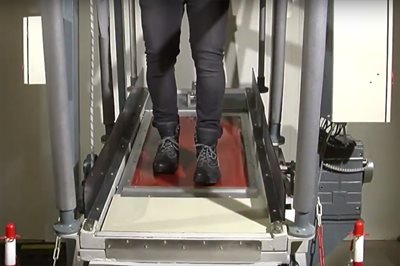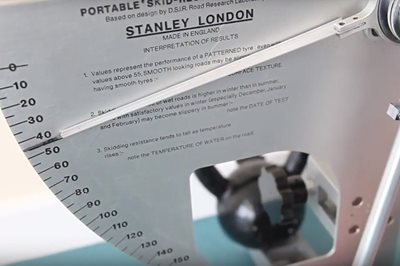
Can't see the region you're looking for? You can find a list of our global locations here
In order to reduce the number of accidents on our buses, we need to ensure that the floors used have a competent slip resistance rating. There are three commonly used tests for slip resistance, each different to the other and therefore, testing for different things. Two are commonly used the ramp test and the pendulum test

The ramp test (DIN 51130), measures the gradient at which a person slips on a flooring sample on a ramp. The flooring is contaminated with motor oil, and the person used in the test wears cleated work boots. The HSE warns that:
If this is not representative of the area where you wish to install the floor, the data will be misleading. Another common problem is interpreting the data produced. Each ‘R’ value contains a range of possible results making it difficult to ascertain how slippery a floor is.1
It is also important to consider that the ramp test can only be conducted on flooring prior to installation, so a ramp test cannot be used to measure sustained slip resistance or monitor how effective a cleaning regime is for maintaining slip resistance. So, while an R classification is a good indicator of a general value of the slip resistance of your chosen floor, to get a more accurate interpretation it is better to view these values alongside a coefficient of friction or a pendulum test value.
